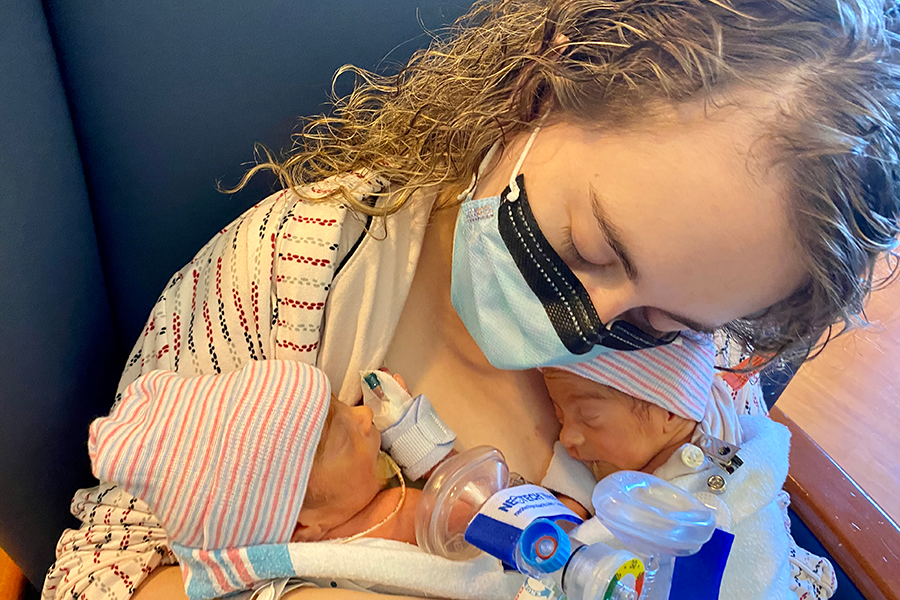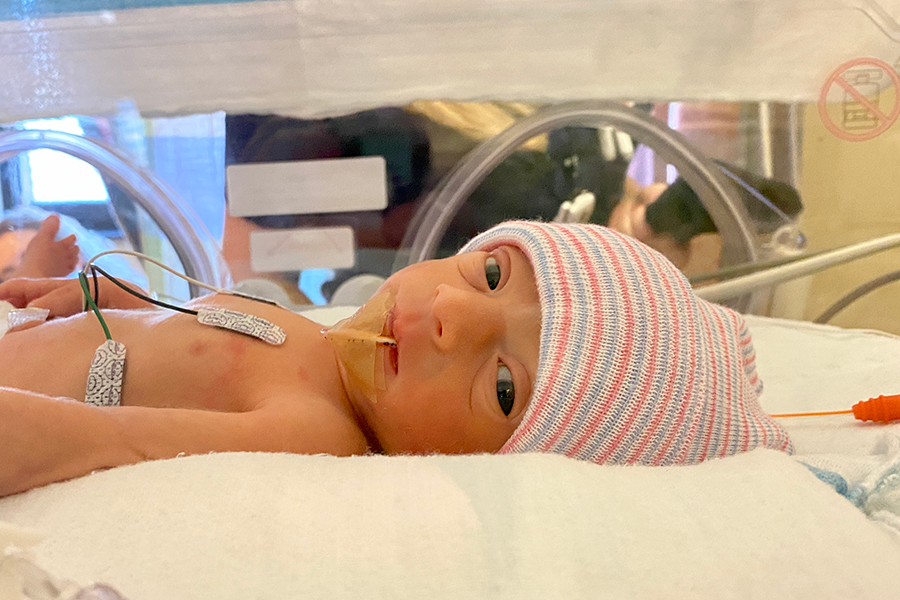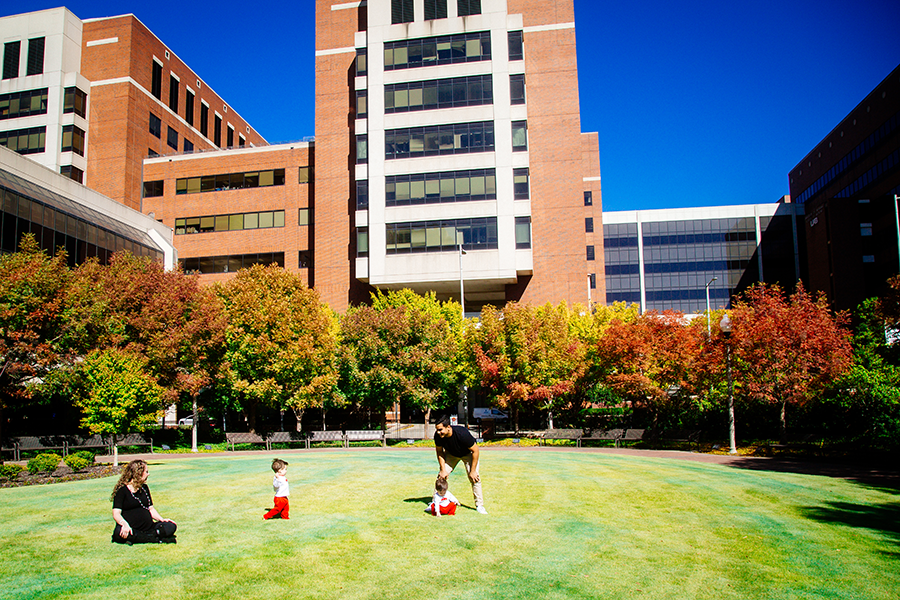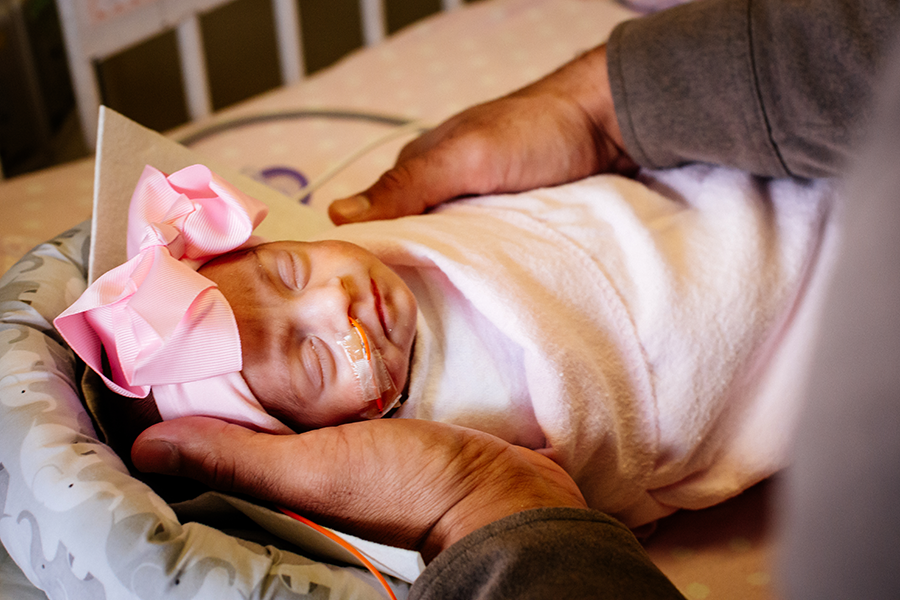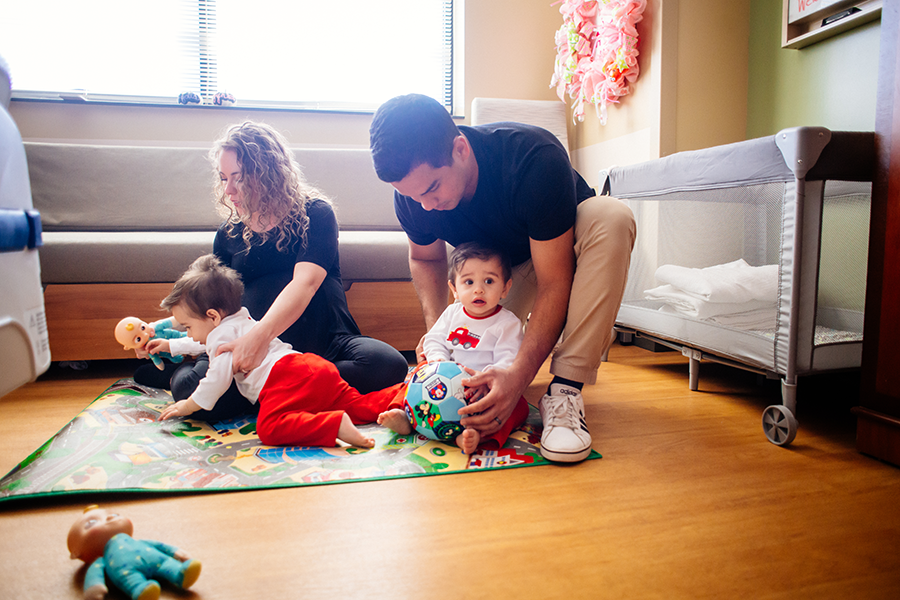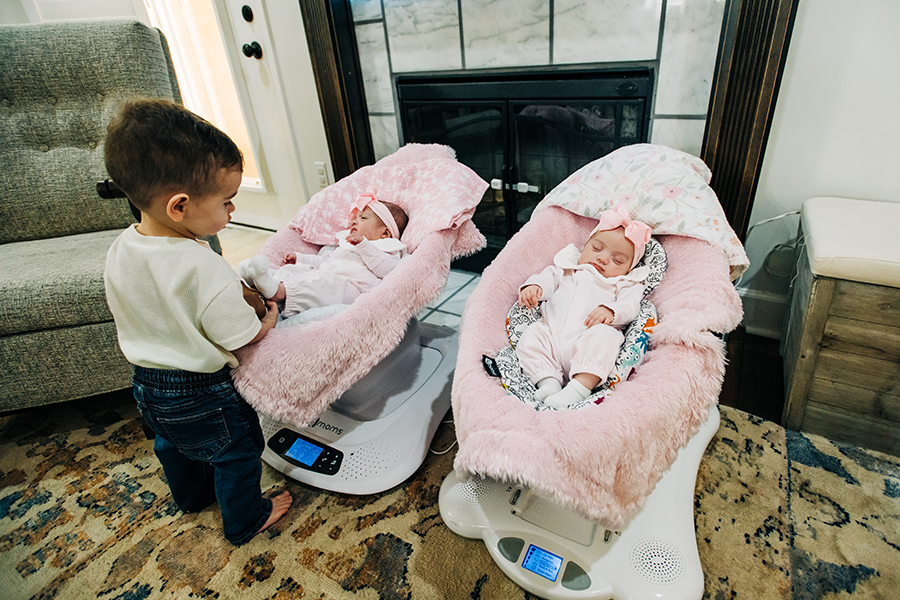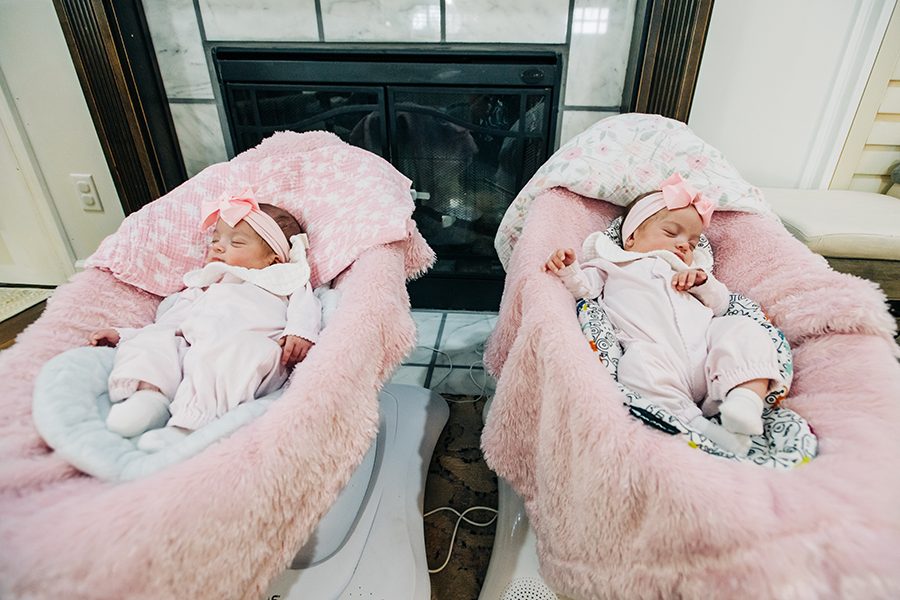 Britney and Frankie Alba with their twin boys, Luka and Levi.
Britney and Frankie Alba with their twin boys, Luka and Levi.
Photography: Steve WoodThe odds of winning the jackpot are approximately one in 292 million. The odds of being struck by lightning are less than one in a million. Britney Alba, an elementary school teacher from Tuscaloosa, Alabama, found herself in an extraordinary situation when she delivered her second set of identical twins at the University of Alabama at Birmingham Women and Infants Center.
Defying the unknown odds did not stop there. Alba’s twins were monoamniotic-monochorionic and shared the same placenta, amniotic sac and fluid. MoMo twins are some of the rarest types of twins, making up less than 1 percent of all births in the United States.
A few months earlier, Alba laughed in disbelief when she found out she was pregnant with twins only six months after giving birth to her boys, Luka and Levi. The initial shock turned to joy then worry when Alba and her husband, Frankie, were informed of the risks associated with MoMo twins.
“While extremely rare, MoMo twin pregnancies have a high risk of fetal complications,” said Rachel Sinkey, M.D., assistant professor in the UAB Marnix E. Heersink School of Medicine Department of Obstetrics and Gynecology. “They share everything except umbilical cords, which can easily become entangled in a single sac. Unfortunately, there is a high rate of stillbirths associated with MoMo twins.”
UAB Department of Obstetrics and Gynecology ranked No. 5 program in the nation by U.S. News & World Report.
Alba was referred to UAB, where physicians in the Division of Maternal-Fetal Medicine specialize in diagnosis and management of high-risk pregnancies. To increase Alba’s and the twins’ chances of survival and minimize complication risks, the UAB team advised that Alba be admitted into the UAB High-Risk Obstetrics Unit between 24 and 28 weeks to receive 24/7 care.
“It was nerve-wracking to think about the journey ahead of me and being away from my boys for several weeks,” Alba said. “But I knew I had a village at home and would be in great hands at UAB, which calmed my worries.”
 On Oct. 25, 2022, Lydia and Lynlee Alba were delivered at 32 weeks’ gestation via cesarean section. Photography courtesy of Britney AlbaAlba was admitted at 25 weeks and spent over 50 days in the HRO unit. During her stay, Alba was attended by a multidisciplinary team of maternal-fetal specialists, high-risk obstetrics nurses and neonatologists. The team conducted ongoing prenatal care, including fetal monitoring several times a day to ensure the twins remained well. Given the rarity of her pregnancy, Alba was also visited by medical students, residents and fellows.
On Oct. 25, 2022, Lydia and Lynlee Alba were delivered at 32 weeks’ gestation via cesarean section. Photography courtesy of Britney AlbaAlba was admitted at 25 weeks and spent over 50 days in the HRO unit. During her stay, Alba was attended by a multidisciplinary team of maternal-fetal specialists, high-risk obstetrics nurses and neonatologists. The team conducted ongoing prenatal care, including fetal monitoring several times a day to ensure the twins remained well. Given the rarity of her pregnancy, Alba was also visited by medical students, residents and fellows.
“UAB is an academic research medical facility, and as a teacher I wholeheartedly understand the importance of learning,” Alba said. “Having had to take a step away from teaching during my pregnancy, it was nice still being part of the educational process.”
The team’s goal was to get the twins to 32-34 weeks, then deliver via cesarean section. Sinkey says the gestational age is the national standard for delivering MoMo twins due to survival chances for preterm birth being high and the increased risk of fetal death or stillbirth due to cord entanglement the longer the delivery is delayed.
On Oct. 25, 2022, Lydia and Lynlee Alba were delivered at 32 weeks’ gestation and admitted to the UAB Regional Newborn Care Unit for continuing care. Over the next month, they continued to develop under the care of the multidisciplinary RNICU team and were discharged just in time for the holiday season on Dec. 7 — two weeks before their original due date.
 Lydia and Lynlee spent several weeks in the UAB RNICU before being discharged on Dec. 7— two weeks before their original due date.
Lydia and Lynlee spent several weeks in the UAB RNICU before being discharged on Dec. 7— two weeks before their original due date.
Photography: Steve WoodSinkey, who had never seen a MoMo twin pregnancy in a mom who already had monochorionic-diamniotic twins, twins who share one placenta but have two separate sacs, says Alba and her girls will always be patients she remembers.
“MoMo twins are rare, and sometimes both twins do not make it,” Sinkey said. “I think the team-based care approach at UAB between maternal-fetal specialists, genetic counselors, nurses and NICU team greatly helped the outcome. From beginning to end, Britney and the girls have defied all odds.”
Now starting 2023 as a family of six, Alba reflects on her journey.
“I had to spend a lot of time alone at UAB, but the HRO team took me in and became my family,” Alba said. “It was not an easy journey, but we’re lucky to have had the team and resources at UAB to get us through everything. Now that everyone is home, I feel very blessed and humbled to finally have my whole family home.”
-
Britney Alba with her daughters, Lynlee and Lydia
Photography courtesy of Britney Alba
-
Lynlee and Lydia received multidisciplinary care from the RNICU team.
Photography courtesy of Britney Alba
-
Britney and Frankie Alba play with their sons, Luka and Levi, in front of the UAB Women and Infants Center.
Photography: Steve Wood
-
Lynlee Alba in the UAB RNICU
Photography: Steve Wood
-
Lydia Alba in the UAB RNICU
Photography: Steve Wood
-
Britney Alba was admitted to UAB Hospital at 25 weeks and spent over 50 days on the High-Risk Obstetrics Unit. Frankie Alba and their sons visited every week.
Photography: Steve Wood
-
Levi, Lydia and Lynlee Alba
Photography: Andrea Mabry
-
Lydia and Lynlee Alba
Photography: Andrea Mabry
-
Britney Alba with Levi, Luka and Lydia
Photography: Andrea Mabry
